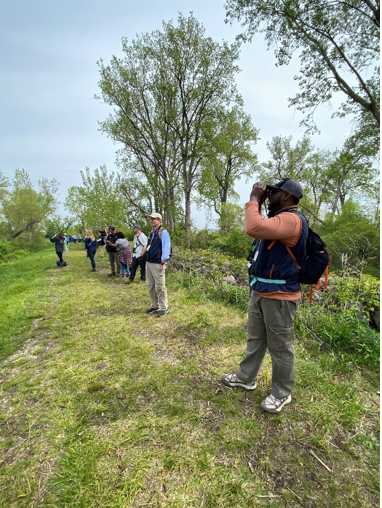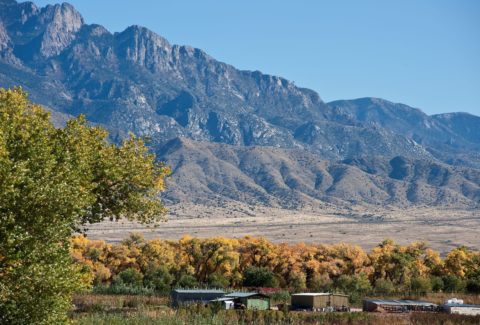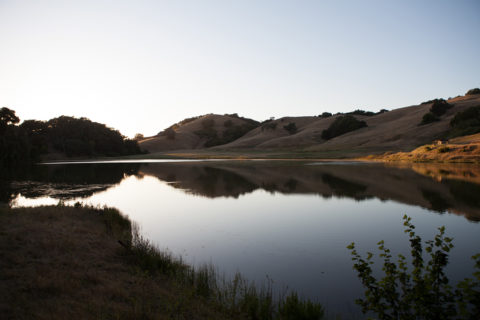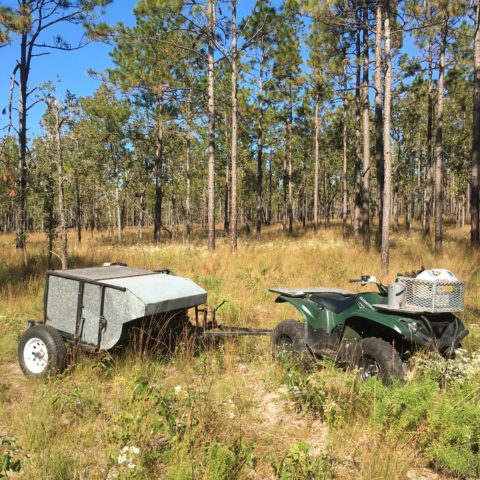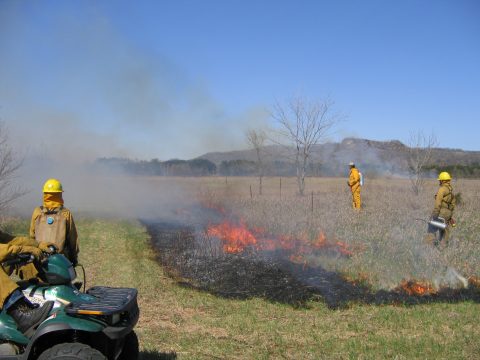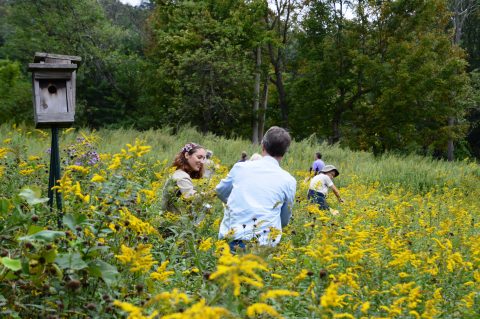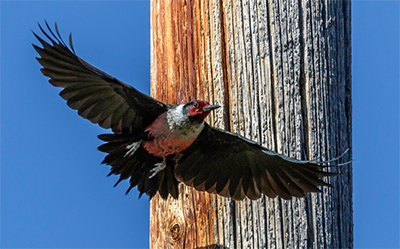2022 Small Grant Awardees
We are pleased to announce the Cornell Land Trust Grant awardees for 2022. With support from our generous sponsors the program was able to award $230,000 to 14 land trusts throughout the country to assist awardees with management and restoration of private protected lands, integrate bird conservation and tools into prioritization and planning, and develop partnerships within the birding community to amplify conservation efforts.
Chelan-Douglas Land Trust (Washington), $25,000
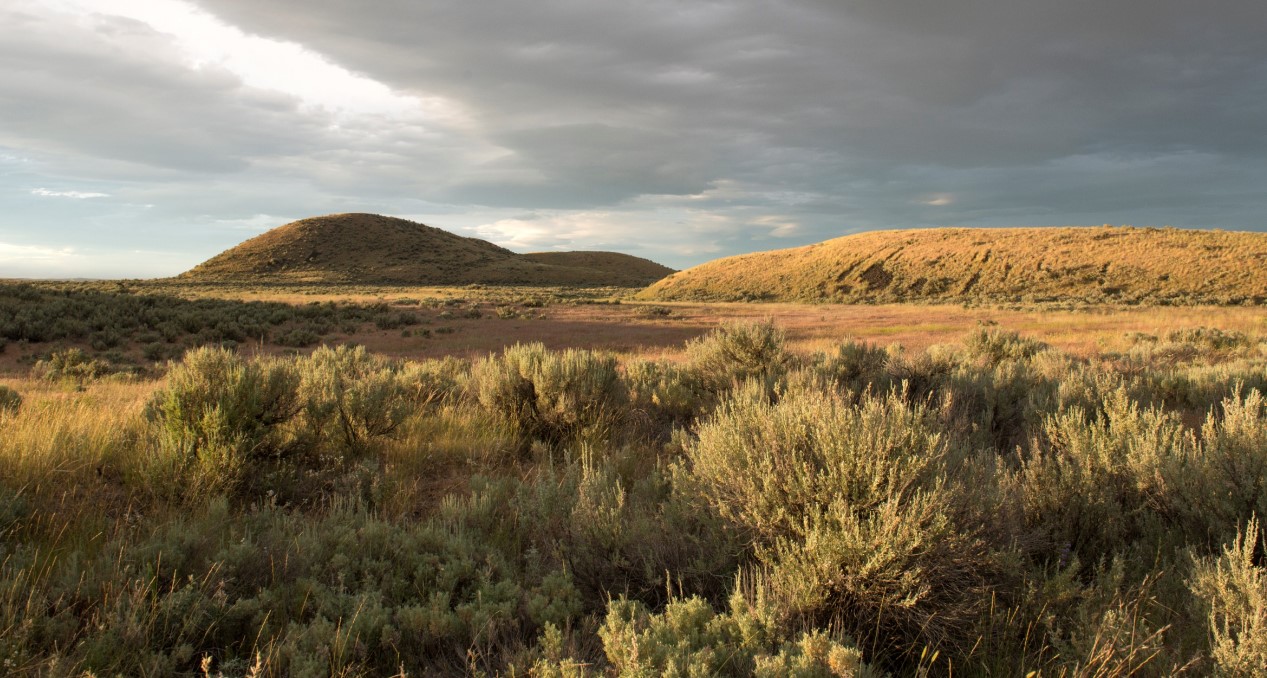
The Chelan-Douglas Land Trust (CDLT) is continuing their partnership with the National Resources Conservation Service, U.S. Fish and Wildlife Service, North Central Washington and Spokane Audubon Societies, and Washington Native Plant Society to restore CDLT’s 1,396-acre Spiva Butte Nature Preserve (SBNP). These partnerships were forged after devastating wildfires swept through the region in September 2020 and burned much of the remaining Greater Sage-Grouse and Sharp-tailed Grouse shrub-steppe habitats in Washington state, including CDLT’s SBNP. Greater Sage-Grouse and Sharp-tailed Grouse occupied only 8% and 3%, respectively, of their historic range within the state of Washington prior to the 2020 fires. “When considered in total, the SBNP is in a perfect location for both species of grouse, suggesting that habitat restoration has tremendous potential” says Dr. Michael Schroeder, Washington Department of Fish and Wildlife Research Scientist. The Cornell land trust initiative grant will fund the planting of 19, two-acre plots of big sagebrush, critical to the survival of Greater Sage-Grouse. These new plots will provide a wind-dispersed seed source on the property and for the surrounding landscape providing varying densities of sagebrush in the future. Sharp-tailed Grouse rely on associated riparian habitats within the shrub-steppe and will benefit directly from planting 12 riparian species of native trees and shrubs within 28 acres of the Deep Creek drainage. Restoration will provide important food sources, cover, and habitat connectivity. CDLT will also begin a bird monitoring program at eight sites on SBNP by training volunteers from the North Central Washington Audubon Society to conduct surveys and collect and enter data into eBird. Susan Ballinger, CDLT Conservation Fellow, says “This grant pushes CDLT and partners across the finish line in meeting our initial post-fire restoration goals on SBNP.”
Great Peninsula Conservancy (Washington), $25,000
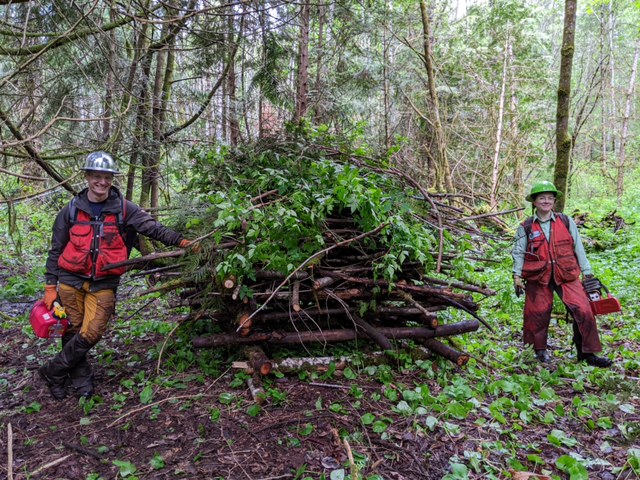
Photo Credit: GPC
Great Peninsula Conservancy (GPC) is collaborating with OrnithoLogistics, The Evergreen State College, and Northwest Natural Resource Group to address an important information gap by initiating a monitoring study of bird responses to conservation practices on five GPC forestlands. A goal of GPC’s stewardship program is to maintain and/or improve the ecological integrity of GPC’s forestlands by increasing forest structure and species diversity. Historically managed for timber production, the five preserves identified in this study have little diversity in terms of tree species and tree age. “These homogenous forests have limited habitat value for wildlife,” says Adrian Wolf, GPC Stewardship Manager. “Increasing snags and downed logs in our forest stands is critical because dead logs are far more alive than live ones”. The project identified 54 bird species that could benefit from the conservation practices and will use remote acoustic recording devices to understand how these birds respond to management activities. With support from the Cornell land trust initiative, AudioMoth acoustic devices will capture avian community response to three interventions: 1) creation of snags, den trees, and coarse woody debris, 2) creating structural diversity with patch openings, and 3) replanting with a diversity of conifers and shrubs. This acoustic data will be ground truthed with point counts and area search data both pre and post-management. The avian response to the conservation practices collected via acoustic recorders will be analyzed using Arbimon software and then lessons learned will be shared with project partners and other land trusts. Understanding the efficacy and utility of the remote acoustic monitoring technique has important implications for guiding future restoration actions for GPC and building capacity for the greater land trust community.
Kennebec Estuary Land Trust (Maine), $25,000
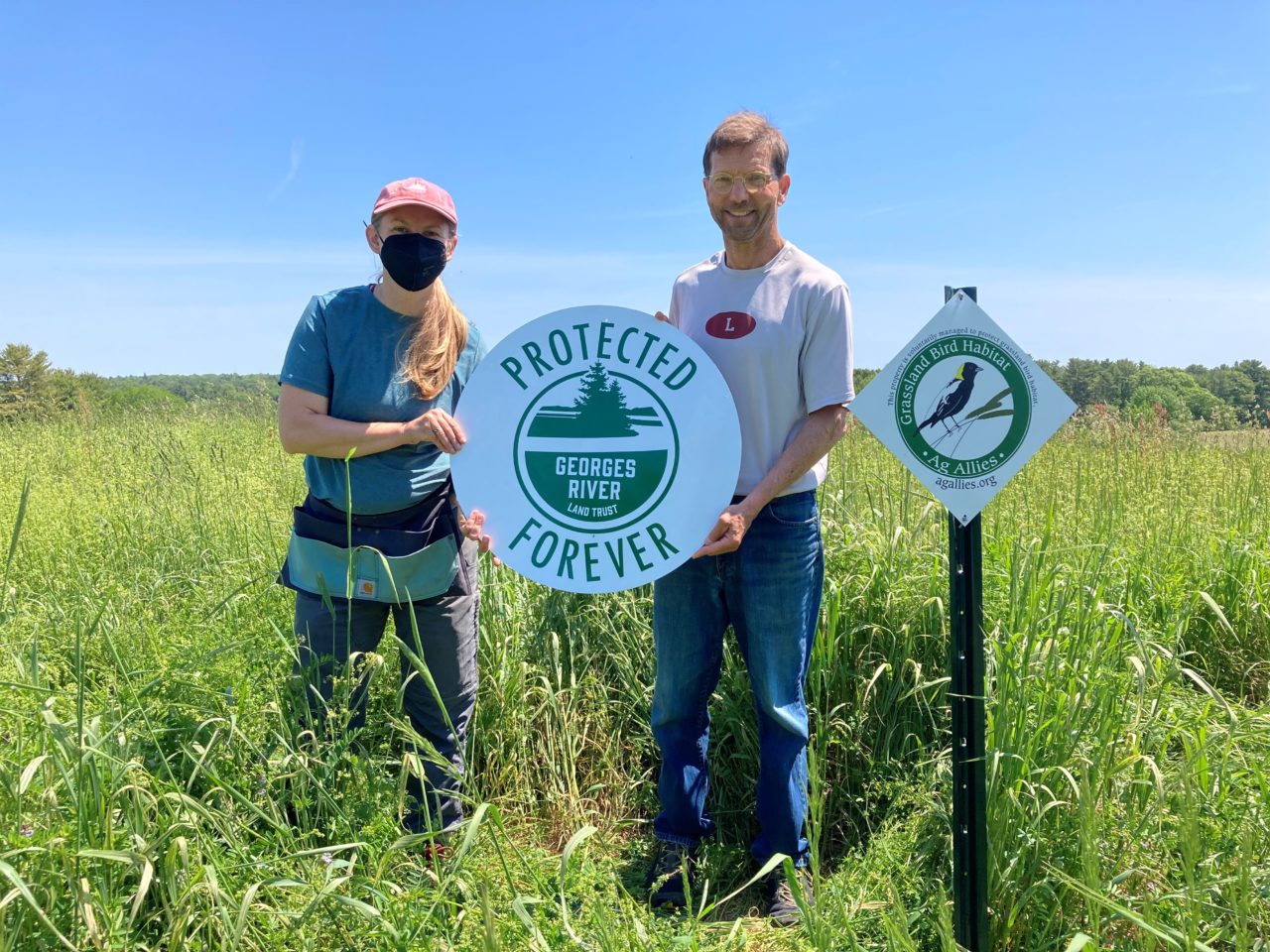
The Kennebec Estuary Land Trust (KELT) is expanding their existing partnership with Ag Allies to build collaborative relationships throughout Maine. After two years of this dynamic partnership, and six years since the creation of Ag Allies, this effort has protected and improved thousands of grassland acres habitat for breeding birds throughout the state. Laura Lecker, founder and manager of Ag Allies, and Maeve McGowan, grassland bird conservation specialist, work closely with Maine farmers, land trusts, municipalities, and other landowners to improve the breeding success of Bobolinks and other grassland birds. “Because grassland birds nest in active agricultural fields that are often harvested for hay, their conservation needs present a unique challenge,” says Maeve McGowan, “Without our farmers, Maine would not have grassland bird habitat. For them, the land is their living, and for these birds, it is crucial breeding habitat needed to stabilize their populations. That’s why it’s so crucial to find creative solutions that protect Maine’s grassland birds and the interests of our farmers.” Project staff will help landowners navigate harvesting hay, improving soil quality, managing invasive species, monitoring for grassland birds, and maintaining public access to open space while protecting breeding populations of Bobolinks, Savannah Sparrows, and other grassland specialists. The program will provide incentive payments to farmers to help offset the economic loss associated with delayed harvesting and work to make these practices sustainable in the future for each landowner. They will continue partnering with Maine land trusts, municipalities, and other organizations, and will develop and deepen strategic partnerships in surrounding states. The team will also offer outreach and educational events to organizations and visits to individuals who own, manage, or are simply interested in grasslands.
Piedmont Environmental Council (Virginia), $25,000
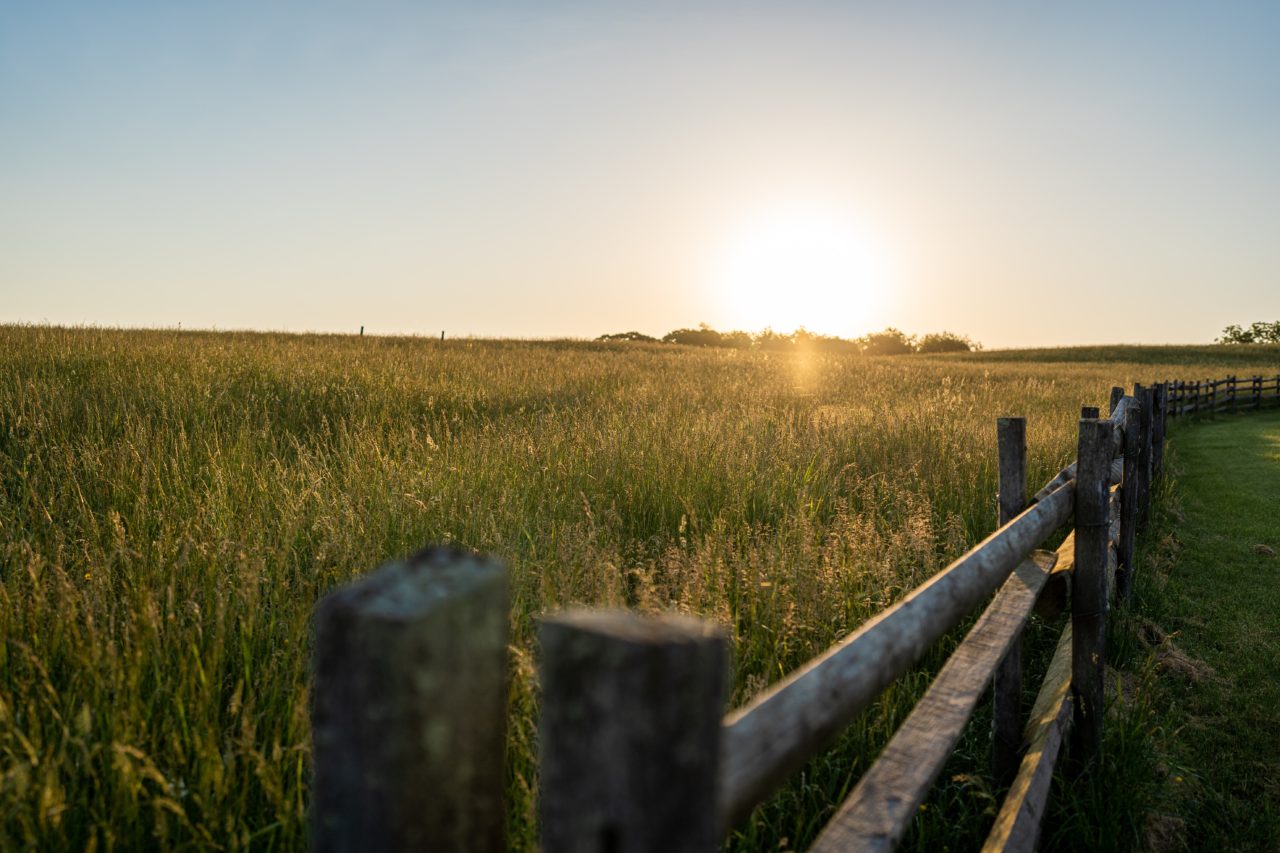
The Piedmont Environmental Council, Smithsonian’s Virginia Working Landscapes, American Farmland Trust, and Quail Forever continue to address the ongoing decline of grassland bird populations in northern Virginia through the Virginia Grassland Bird Initiative (VGBI). By working with landowners and producers, VGBI is implementing a suite of best management practices on working landscapes with the following goals: (1) stem the tide of grassland bird declines in VA on private lands, (2) improve the resiliency of working landscapes, (3) and positively impact the livelihoods that depend upon those lands. With support from the Cornell land trust initiative, VGBI will amplify the reach of VGBI’s delayed haying and summer pasture stockpiling incentives program—currently underway across nine counties in the Piedmont—into five new counties within the Shenandoah Valley. These include the top four agricultural income-producing counties in the state, where demand for conservation resources and technical assistance exceeds availability. The delayed haying option excludes haying from a portion of hayfields during spring and early summer, while the summer pasture stockpiling option excludes livestock grazing from select pastures during spring and summer in order to store forage for late-summer and early-fall. These best management practices result in grass fields being left completely untouched from mid-April through mid-July during the nesting season for grassland birds. VGBI will work with producers on the ground to implement these practices on the landscape, recruit and train citizen scientists to conduct breeding bird surveys using eBird, and attract new landowners and land trusts into the program through a diverse suite of outreach events. VGBI will be engaging with new partners, including the Shenandoah Valley Conservation Collaborative and Shenandoah Valley representatives from VA Cooperative Extension and the Virginia Forage and Grassland Council, in order to connect this incentives program with applicable producers in the Shenandoah Valley and tailor the program to best meet their needs.
Sonoma Land Trust (California), $25,000
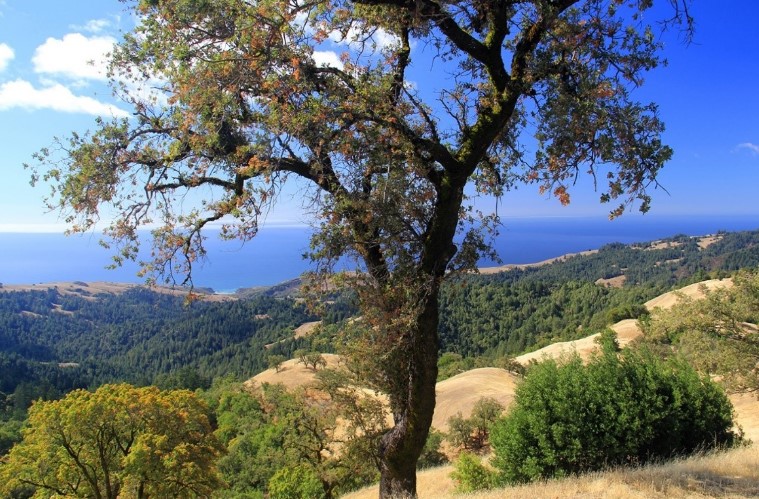
Photo Credit: Sam Woodworth
Sonoma Land Trust, The Wildlands Conservancy, and Point Blue Conservation Science are partnering together with vital support from The Cornell Land Trust Bird Conservation Initiative to assess woodland birds as an indicator of ecosystem health within forest treatment units being managed for wildfire resiliency. Sonoma County has been at the epicenter of climate driven wildfire activity in California over the past five years and groups in the region, as well as across the West, are accelerating the pace and scale of vegetation management activity to reduce accumulated fuel loads for community safety. The Monitoring Avian Community Response to Forest Fuels Management Project will assess the 2023 spring breeding season avian response to management and compare results to baseline surveys within forest treatment units on four conservation properties to determine species richness and abundance, with a focus on special-status or indicator species. Point Blue will conduct monitoring activities in the forest treatment units and enter data into eBird, generate eBird hotspots to engage birders and citizen scientists, and use eBird species maps to determine where state wildlife action plan species have been sighted in relation to each study site. Overall project findings will help land managers monitor the health of forest ecosystems under shaded fuel break, prescribed fire, and restoration forestry management for ecological goals and wildfire resilience. As fuel reduction treatments increase and proliferate across Northern California in response to the growing threat of wildfire, there may be valuable lessons to learn from this study that can help communities manage forests and maintain healthy bird populations. Project findings will be shared in two virtual outreach presentations to engage other land managers and spotlight the approach of monitoring birds as a barometer of forest habitat health.
Tall Timbers Research Station & Land Conservancy, (Florida/ Georgia) $25,000
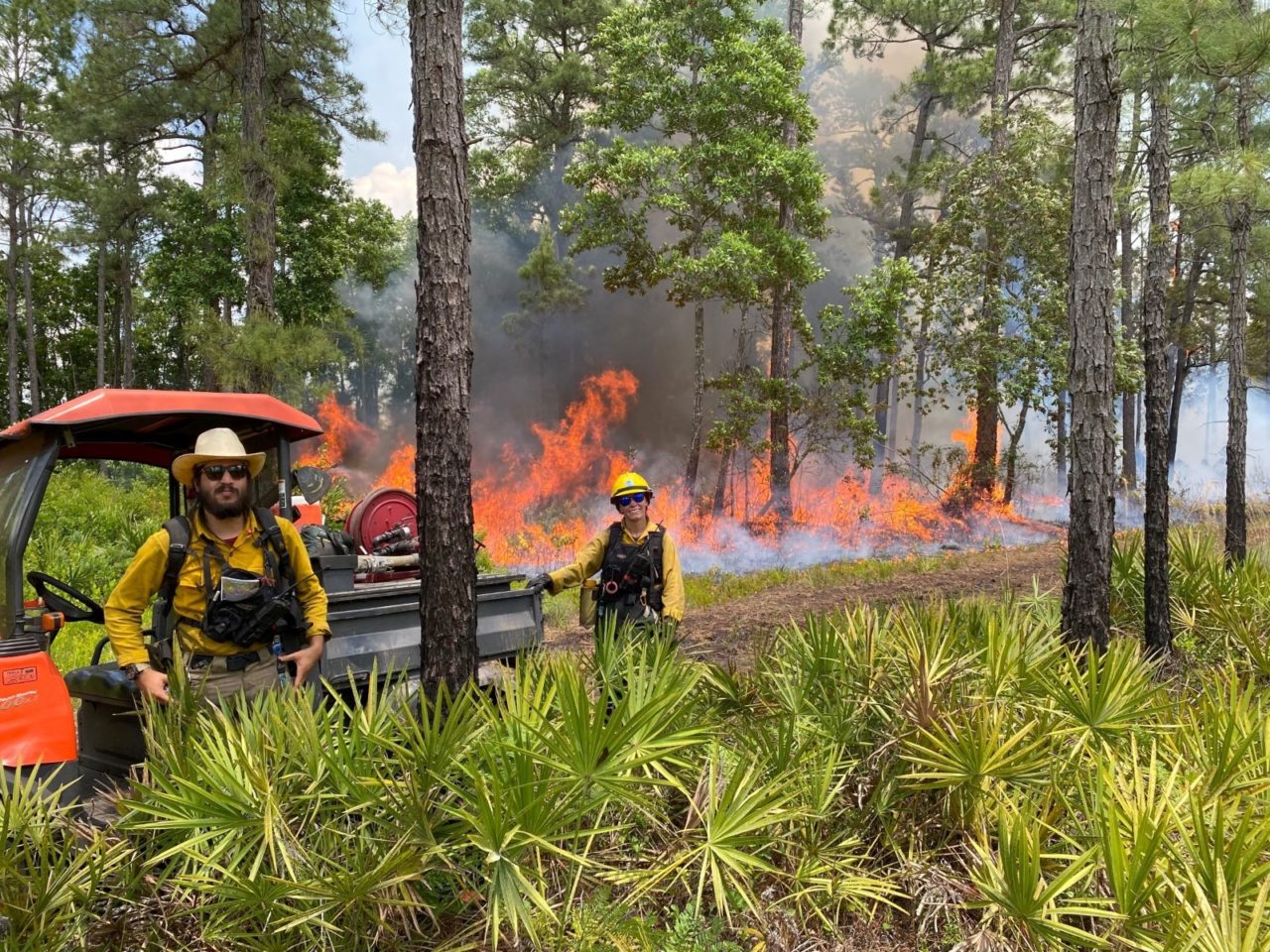
In the Southeast, lightning-induced fires naturally occurred most often during the growing and bird breeding season between April and July. Natural communities, and the species found within them, adapted to these fires and even came to rely upon them. Despite this, many landowners that implement prescribed fire steer clear of this time period due to the perception that these fires will harm native birds, such as the Northern Bobwhite, a grassland nesting bird whose population is in steep decline. To counter this notion, Tall Timbers Research Station and Land Conservancy and Alachua Conservation Trust have partnered together and formed a Conservation Collaborative. Both land trusts will help landowners in their regions burn over 300 acres during the growing season. The land trusts will record site conditions pre-burn and partner with local Audubon chapters to conduct pre and post-monitoring of the burned areas using eBird to document the response of bird species such as Bachman’s Sparrow, Northern Bobwhite, Eastern Meadowlark, and Eastern Towhee. Landowners that participate in the program will receive financial assistance to help offset prescribed burning costs and make burning during this time frame more appealing. Results of this project will be communicated digitally through a GIS Storymap and video to spread the message that growing season burns are helpful, rather than harmful, to our native wildlife and demonstrate the benefits of coordinated stakeholder efforts to restore private lands for native birds.
Three Rivers Land Trust (North Carolina), $25,000

The Three Rivers Land Trust‘s (TRLT) Creating and Improving Avian Habitat Quality along Critical Corridors in Central North Carolina restoration project will improve sensitive areas aptly situated along important waterways and contiguous units of managed land to enhance plant communities that serve as critical foraging and nesting sites for avian species. Our goal is to implement applied habitat management practices for ecosystem management and restoration that create and enhance habitat for declining populations of neotropical migrants, with special emphasis on shrubland and grassland bird species.
Land management practices include prescribed fire, snag and canopy gap creation, invasive plant control, and high-quality early succession establishment and maintenance. TRLT will use eBird to conduct baseline bird surveys and post-treatment surveys to measure success of management decisions. Katie Stovall, TRLT’s Conservation Lands Manager said “This grant funding is instrumental to the stewardship of our lands and provides an opportunity to create and maintain vegetation communities that support declining avian species, like Northern Bobwhite, that have declined precipitously in our region within the past 50 years.”
TRLT will engage community members, partners, and stakeholders by showcasing management techniques used to support and enhance local bird populations on social media through video documentation. TRLT will also invite the community to conduct point counts in the spring to familiarize them with target bird species and how they can be used to assess management. Moreover, TRLT hopes to showcase successful management techniques that improve habitat for sensitive and declining bird species to other land trusts and partners.
Triangle Land Conservancy (North Carolina), $25,000
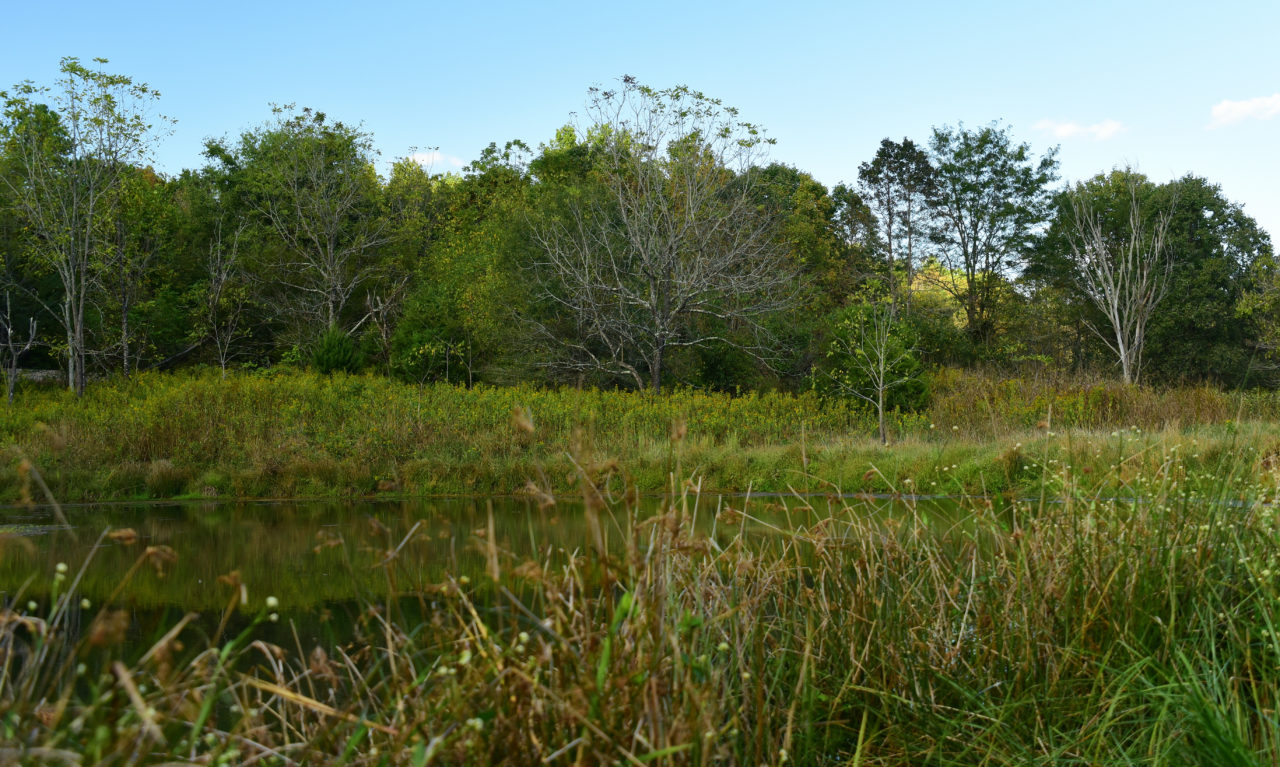
Triangle Land Conservancy’s (TLC) Brumley North Nature Preserve is a local birding hotspot in the Piedmont of North Carolina in the rapidly developing Triangle Region. As a part of the larger 673-acre Brumley Nature Preserve, this 160-acre property is one of the largest tracts of natural areas in the county. Presently, the preserve contains a variety of beneficial habitat including ponds, open fields, wetlands, and mature forest, however its land use history has resulted in expanses of invasive species and stands of machine-planted loblolly pine. TLC’s primary goal is to reverse the course of this land legacy by enhancing habitat quality to benefit breeding, migrating, and residential bird species, as well as other wildlife found on site. In particular, TLC has targeted habitat improvement efforts for the Golden-winged Warbler, a species of concern in North Carolina. TLC will incorporate a series of specific habitant management prescriptions into the preserve’s long-term management plan, including invasive plant species removal, native plant establishment, prescribed burns, and forest canopy gap openings in even-age loblolly pine stands.
TLC is partnering with New Hope Audubon Society (NHAS) to conduct seasonal bird surveys that will help TLC understand the impact of management actions on local bird populations. These partners will engage the public by leading bird hikes and teaching eBird, as well as educational events highlighting the benefit of native plant species for birds, harmful invasive plant species, and TLC’s restoration activities. The project site will serve as an outdoor classroom for local schools and universities where students can learn about wildlife surveys, habitat management, and preserve management. TLC is grateful to the Cornell Lab for supporting habitat work at Brumley North and for enabling them to connect more people with birds in partnership with NHAS.
Blue Heron Headwaters Conservancy (Michigan), $5,000
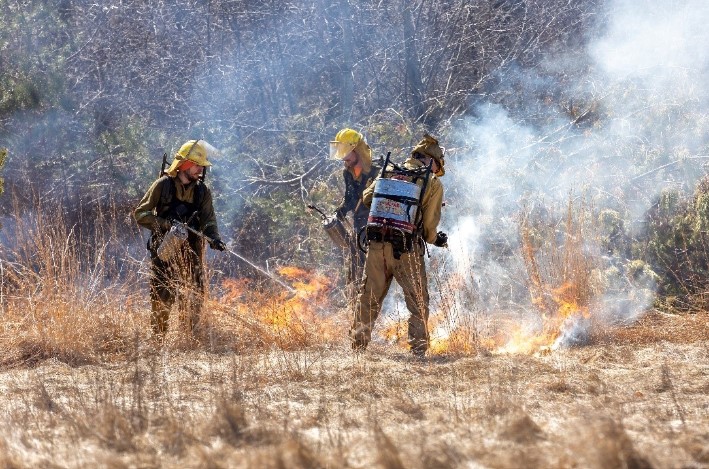
The Blue Heron Headwaters Conservancy (BHHC) is partnering with Wildflower Association of Michigan, Wildtype Nursery, Consumers Energy, Oakland Audubon, and Pollinator Partnership to restore a four-acre degraded farm field into suitable grassland bird habitat in the Restoring Voorheis-Beardsley Prairie for Grassland Birds Project. The property’s small size is offset by its visibility from an adjacent commuter highway for the Detroit-Metro area, with about 60,000 cars passing by daily. A Spring 2022 controlled burn and initial seeding attracted wide attention from the public and our partners.
Funds from the Cornell Small Grant Program will support regular mowing and maintenance, continued native seeding and replanting, interpretive signage highlighting grassland habitat and management practices, roadside signs, and materials for outreach events. BHHC will engage the community by hosting walking tours, a native plant sale, seed collecting, and a BioBlitz event with local universities. As prairie restoration typically takes three to five years to properly establish, this award is immensely important for the mid-phase of BHHC’s project. “We already removed construction trash, rolled up fencing, and hand-pulled invasive plants,” says director Susan Julian, “but the grant from Cornell enables us to go further, maximizing citizen involvement and promoting knowledge that can be used by homeowners.” With the help of dedicated volunteers, faithful donors, and staff, BHHC will continue maintenance activities and surveying to create a beneficial landscape for the more common, yet declining, grassland birds seeking survival in a suburban landscape.
Connecticut Land Conservation Council (Connecticut), $5,000
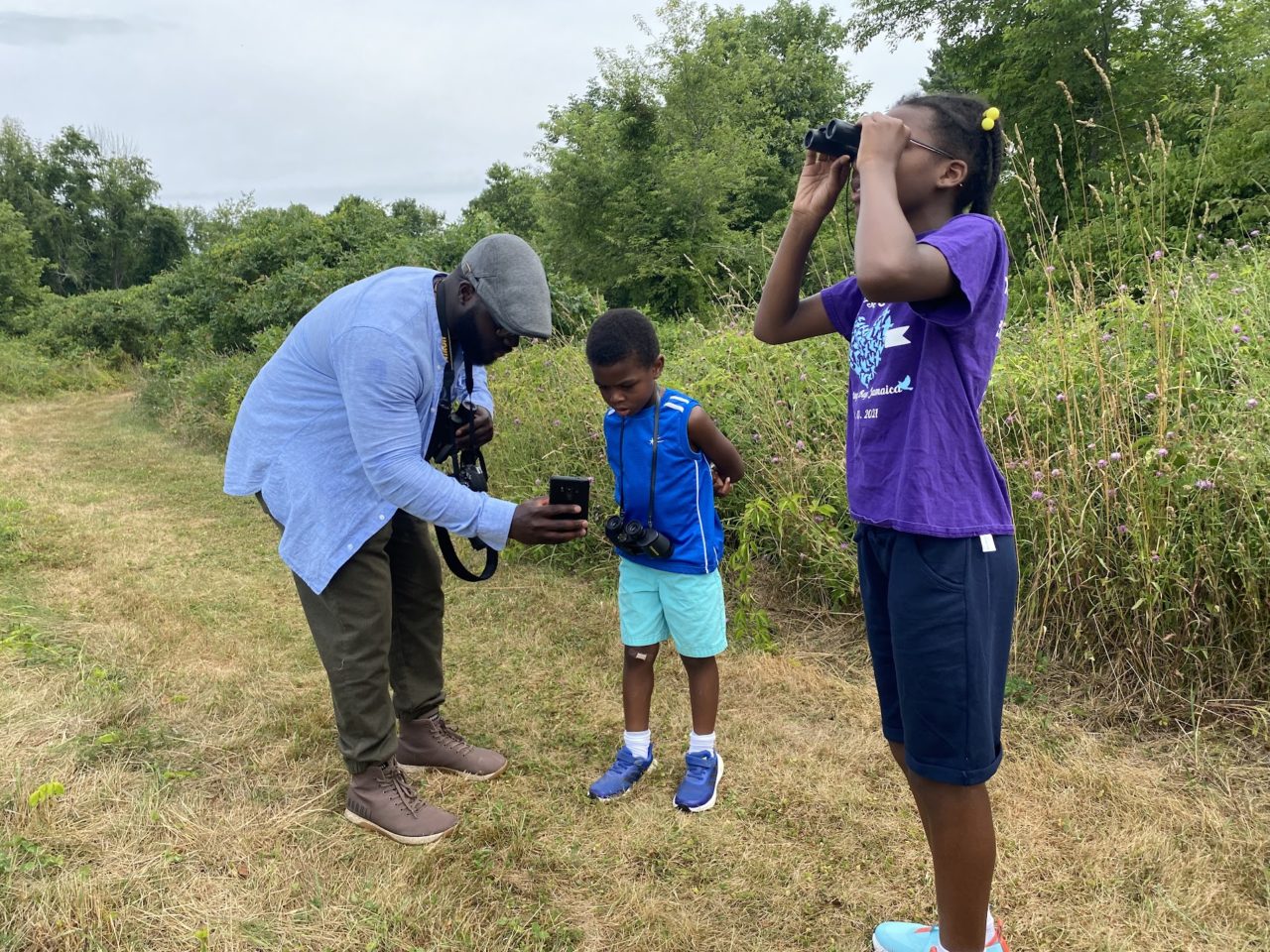
The Connecticut Land Conservation Council (CLCC) is the only statewide service organization for Connecticut’s land conservation community, helping to ensure land trusts carry out their mission by providing services that improve land trust organization capacity, foster collaborative relationships, and enhance critical funding programs. CLCC and the Salem Land Trust (SLT) are partnering to implement a pilot project that seeks to enable greater engagement and outreach to people and communities of color. This project, Bird and Hike with Salem Land Trust, uses land trust preserves as a space to provide opportunities for guided birding and hiking led by a birder of color for communities of color. Hikes will utilize eBird checklists to introduce participants to common birds found on SLT properties. With support from the Cornell Small Grant Program, CCLC will host a virtual eBird workshop for community members and partners to encourage use of the app on their own properties.
CLCC and SLT recognize the barriers to accessing the outdoors that many people and communities of color face. This project is a recognition of the work that needs to be done and the opportunities land trusts have to create a more welcoming and inclusive conservation community. “We are delighted to implement this project with the vision of engaging communities of color across Connecticut and increasing the relevance of land trusts to these communities,” says CLCC’s Project Specialist, Yaw Owusu Darko.
Kent Land Trust (Connecticut), $5,000
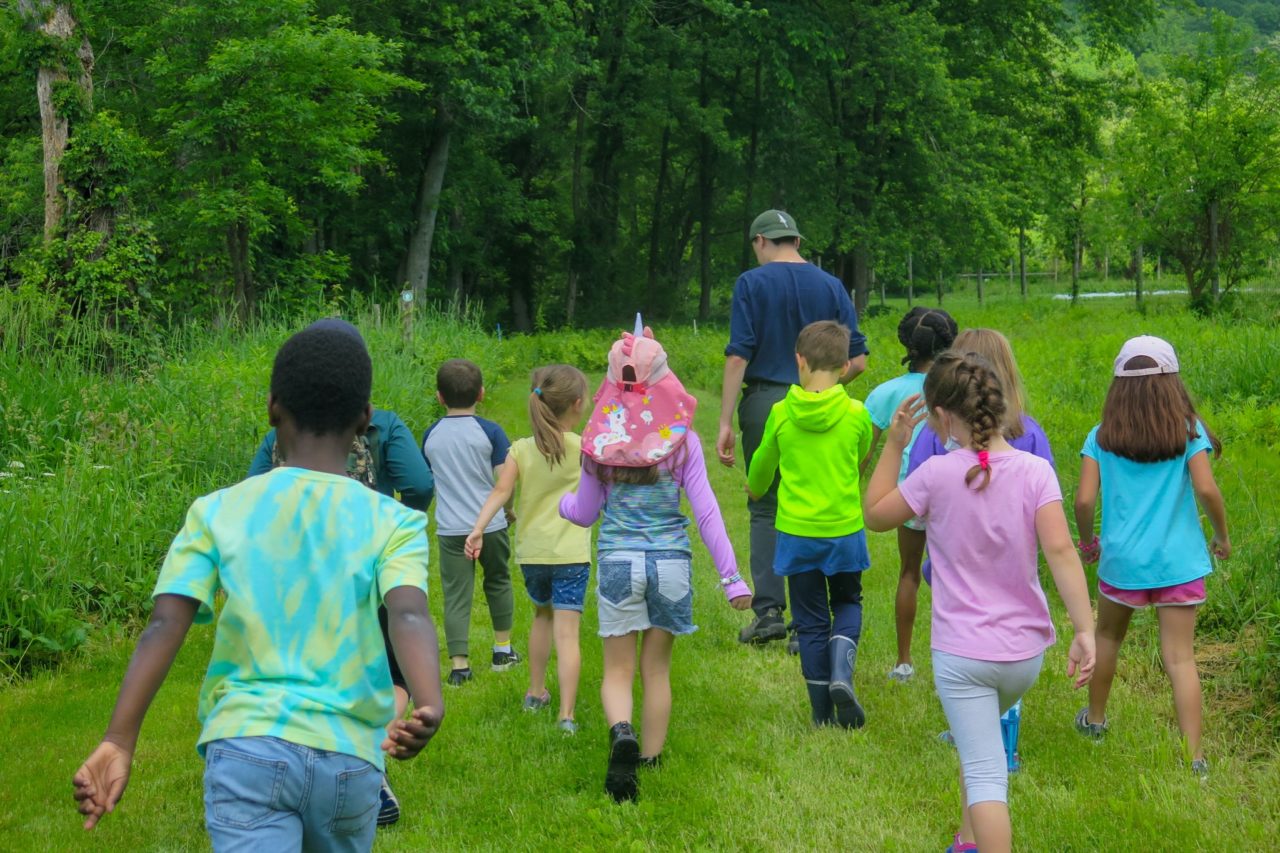
The Kent Land Trust (KLT) is invested in conducting environmental stewardship supporting biodiversity and species resilience. KLT shapes its programming and messaging around improving native habitat, using connectivity and regional flow models as well as employing mapping and community science-driven data collection. The Claire Murphy Trail Riparian Habitat Restoration and Engagement Project will continue this strategy, promoting bird conservation through habitat restoration and community outreach to engage partners and build empathy among volunteers and young people and capacity to conserve bird habitat. The project will restore wetland habitat at KLT’s keystone property the KLT Farm/Claire Murphy Trail, bordering the Housatonic River and Appalachian Trail ridgeline in Kent and part of the Macedonia Forest Block Landscape Important Bird Area. To accomplish this KLT is partnering with the Marvelwood School, Sharon Audubon Center, Audubon Connecticut, the Litchfield Hills Greenprint Collaborative, Follow the Forest, and Pollinator Pathways Connecticut.
KLT will invite volunteers to conduct the restoration work and evaluate habitat following restoration. Interpretive signage will help visitors learn about the project and how to use the property’s eBird Hotspot. In addition to self-led programming, KLT will conduct several training programs incorporating both virtual and fieldwork components. “The Claire Murphy Trail is one of the few places in town where the public can easily access the Housatonic River. The property’s freshwater lagoon and associated wetlands provide excellent habitat for migrating songbirds, waterfowl, and raptors”, said Connie Manes, KLT’s Executive Director. “We are grateful to The Cornell Land Trust Small Grant Program for their support, which will help us engage schoolchildren, youth interns, the public, and conservation partners throughout the region in using eBird for learning and land management.”
New Mexico Land Conservancy (New Mexico), $5,000
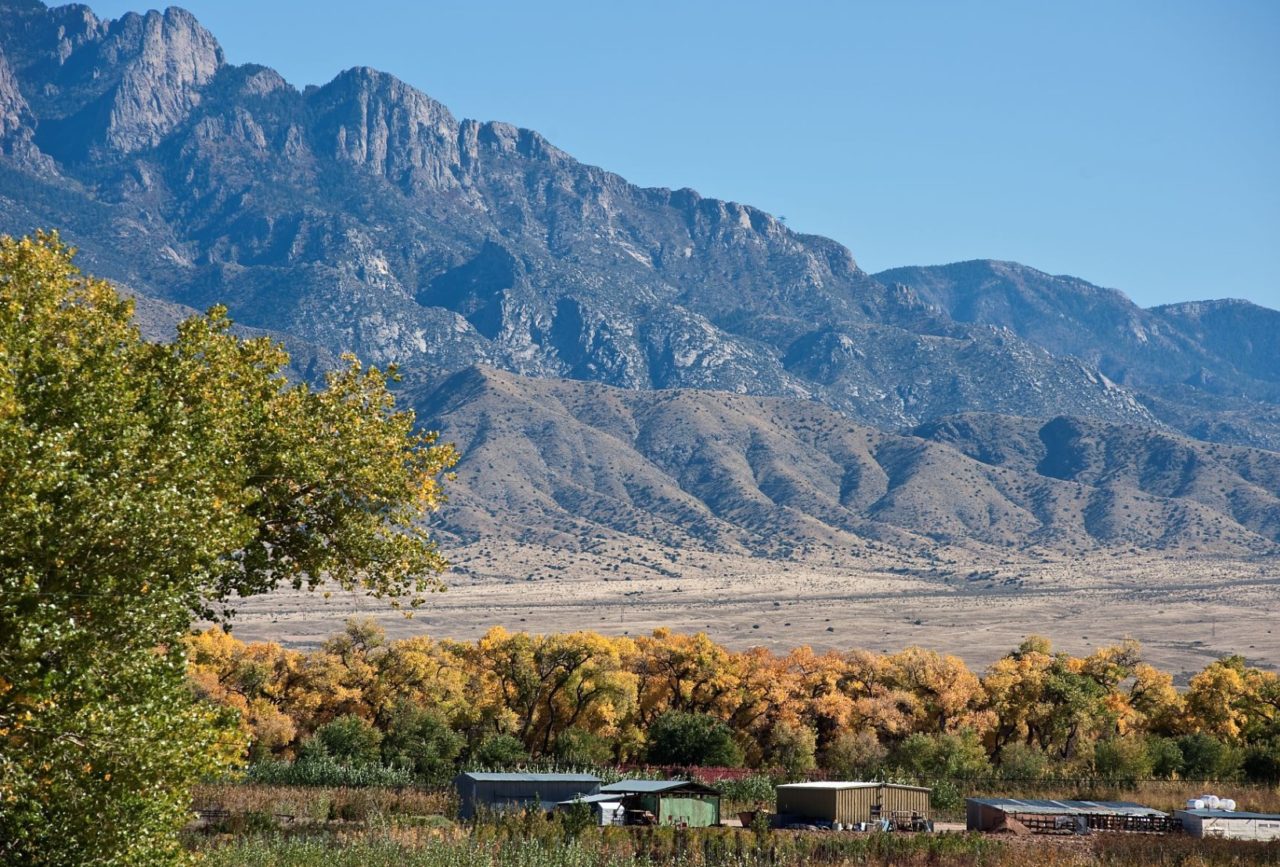
Photo Credit: NMLC
New Mexico Land Conservancy (NMLC) is partnering with Audubon Southwest, Geo 5 Designs, and the Village of Corrales Farmland Preservation and Agricultural Commission to protect and enhance critical migratory bird habitat along the bosque and farmlands of the Middle Rio Grande Valley in Corrales, New Mexico. The Middle Rio Grande Valley is a unique multi-use landscape hosting some of the richest agricultural lands in New Mexico and exceptional riparian habitat, which, at certain times of the year, supports more bird species than all other vegetation types combined. Despite this, the region is facing significant development pressure impacting the agrarian character of the community and critical avian populations such as the Southwestern Willow Flycatcher and Yellow-billed Cuckoo.
Through the Village of Corrales Farmland Preservation Program, NMLC has protected 53 acres of prime farmland across seven properties in the Middle Rio Grande Valley. According to project partner Michael Scisco, “The Village of Corrales has wisely invested in farmland and open space preservation over the years to help retain the agrarian character of their community. This project will allow the public to enjoy the scenic aspects of the conserved farmland properties while learning more about migratory birds and other benefits of farmland and open space preservation within the Village.” With support from the Cornell Land Trust Small Grant Program, NMLC and partners will work with existing conservation easement landowners to design and post signage at three wildlife viewing areas on easement properties and engage landowners in land and water conservation best management practices for migratory and resident bird species. NMLC will also engage the public through an interactive ArcGIS Storymap providing a virtual tour of Corrales easements and two birding trips that will highlight the role of bird habitat along the Middle Rio Grande bosque.
Mountain Area Land Trust (Colorado), $5,000
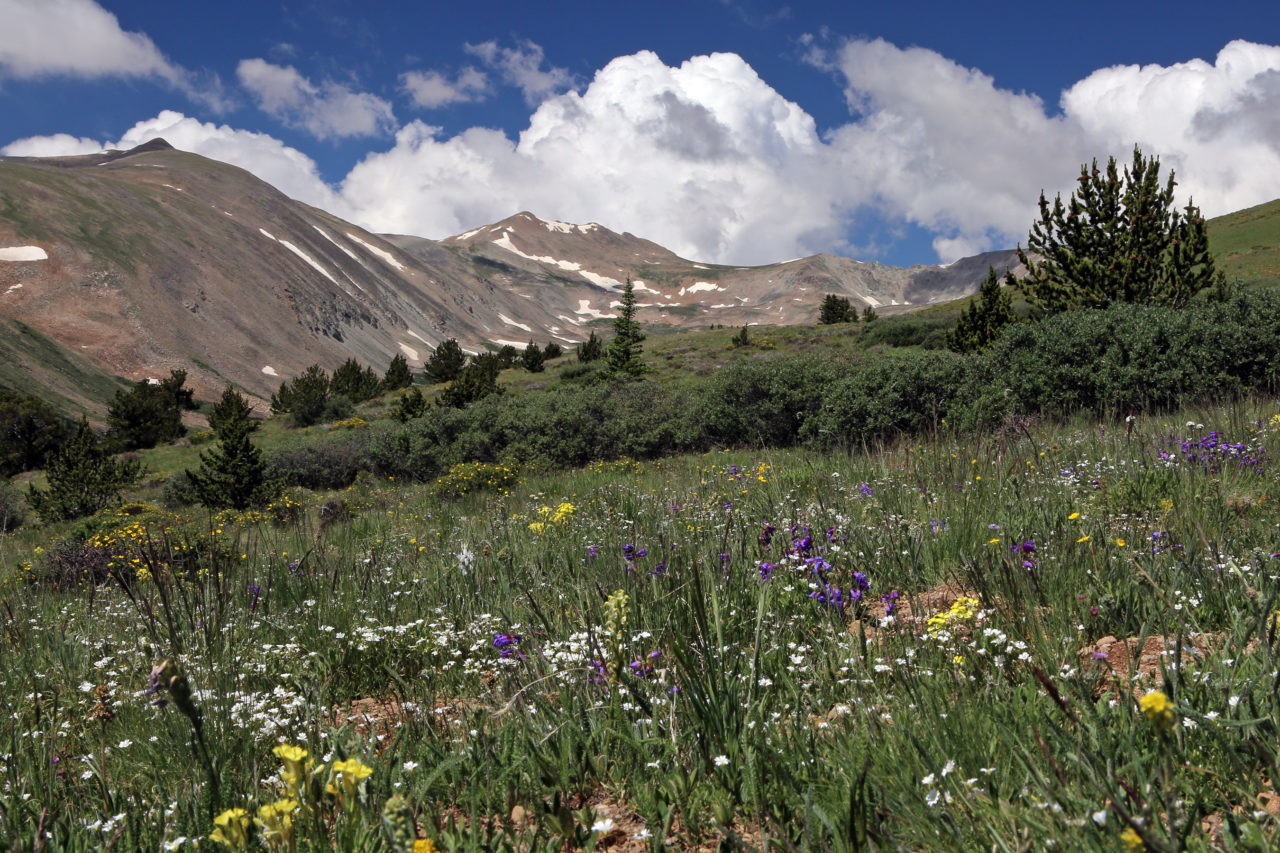
The Mountain Area Land Trust (MALT) serves a six-county, 4,830 square-mile area of the Colorado Rocky Mountain’s Front Range. For more than 30 years MALT has led collaborative science-based initiatives to conserve over 24,000 acres of natural areas, wildlife habitat, working ranches, and historic lands. With funding from the Cornell Land Trust Small Grant Program, MALT will partner with Evergreen Audubon and Colorado State University to create a plan for monitoring bird populations and to host educational workshops on bird identification and eBird data collection for MALT Conservation Easement landowners and the local community at two protected properties in Park County, Colorado. After participants are trained, MALT will establish a formal system with volunteers to conduct monthly eBird surveys at both properties. Sacramento Creek Ranch and Pennsylvania Mountain Natural Area together protect 163 acres of unique, biodiverse, high-elevation habitats. Even so, little to no birding or bird surveys have taken place in this area. The Growing Bird Conservation in Park County, Colorado Through Community Engagement and Strategic Partnerships project will establish both properties as eBird Hotspots, use bird survey data to fill this information gap and inform management efforts, and engage local volunteers to assist in ongoing stewardship of these important lands and waters.
“With this generous funding support, we will build a birding presence from the ground up in an under-birded area with invaluable habitat and unique biodiversity,” said MALT’s Stewardship Director, Ellie Harrison. “We look forward to bringing people together in our shared efforts to conserve the land we love for the sake of the wildlife and people we love.”
Palouse Land Trust (Idaho), $5,000
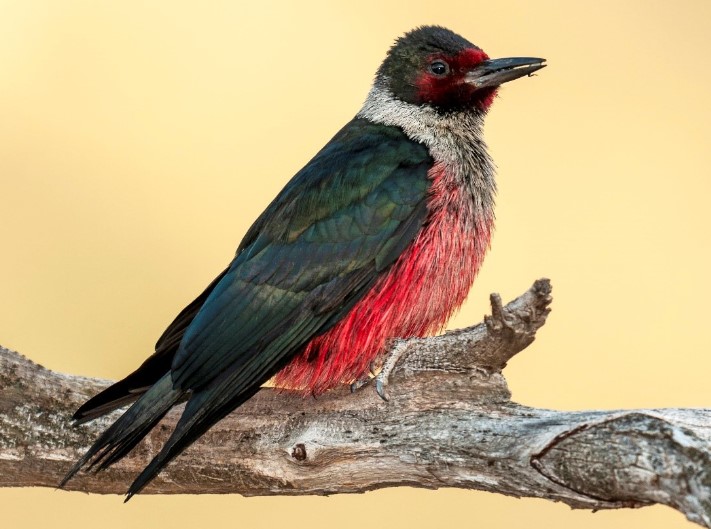
Global Lewis’s Woodpecker populations have decreased by over 67% since 1970.Over 20% of the Lewis’s Woodpecker population breeds in Idaho, putting the state in a unique position to have a large conservation impact on the species. The Lewis’s Woodpecker Habitat Outreach Project will inform private landowners in northern Idaho of the critical role that dry lower montane-foothill forest and riparian forest and shrubland plays for breeding Lewis’s Woodpeckers, while encouraging habitat restoration and preservation on private property.
Palouse Land Trust (PLT) will utilize data from eBird and the Idaho State Wildlife Action Plan to send targeted information pamphlets to private owners of Lewis’s Woodpecker habitat within PLT’s home of Latah County. These pamphlets will contain pictures and facts about this beautiful species, invite landowners to identify and report Lewis’s Woodpecker using the Merlin and eBird applications, and will promote the resources available for habitat stewardship, restoration, and preservation through local conservation organizations such as the Latah Soil and Water Conservation District, Idaho Firewise, and the local USDA National Resources Conservation Service office. Additionally, PLT will pair experienced volunteers with interested landowners to lead birding excursions on the landowners’ properties, teach bird species ID using the Merlin app, and use eBird to submit species observations on private lands. This project aims to build new relationships between private landowners, local conservation partners, and this charismatic, high priority species, while inspiring conservation action and support for voluntary land conservation. Karl Meyer, Conservation Projects Manager for PLT, said “We couldn’t be more excited to work on this project with the Cornell Lab. We can hardly wait to see what happens once people meet this incredible bird and learn about the impact they can make for Lewis’s Woodpecker Populations.”



